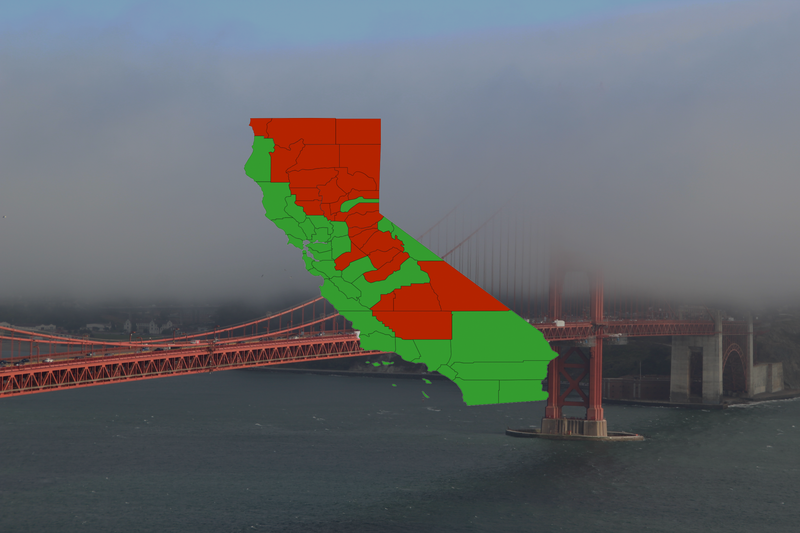What, exactly, is Prop 50? Understanding California’s mid-decade redistricting measure
California voters have approved Proposition 50, authorizing a new congressional map that could add up to five Democratic-leaning seats ahead of the 2026 midterms. Here’s what the measure does and why it could reshape control of the U.S. House.

UPDATE – November 4, 2025, 11:45 p.m. PT: California voters have approved Proposition 50, passing Governor Gavin Newsom’s Election Rigging Response Act and authorizing a new congressional map that could add up to five Democratic-leaning seats before the 2026 midterms. Multiple outlets called the race shortly after polls closed, marking a major win for Newsom and national Democrats seeking to counter mid-decade Republican redraws in Texas and other states. Official certification is expected by early December.
Ballots are in in California’s special statewide election on Proposition 50, a constitutional amendment that could temporarily redraw the state’s congressional map before the 2026 midterms.
If you’re just tuning in, here’s a full rundown of what Prop 50 is, how it came about, and why the outcome could carry national consequences.
What Prop 50 Does
Proposition 50—formally titled the Election Rigging Response Act—asks voters whether California should temporarily suspend its independent Citizens Redistricting Commission and use a new congressional map drawn by the Legislature.
- A “Yes” vote adopts the new map created in Assembly Bill 604, putting it in effect for the 2026 and 2028 elections.
- A “No” vote keeps the existing commission-drawn map, used since 2021, through the 2030 cycle.
The change would expire automatically in 2031, when the commission reconvenes after the next U.S. census.
Why It Was Proposed
Governor Gavin Newsom and legislative Democrats advanced the measure in response to Republican-led mid-decade redistricting efforts in Texas, Missouri, and Ohio.
Newsom argued that California shouldn’t “stand idle” while other states redraw lines mid-cycle to gain House seats, calling Prop 50 a defensive measure to “fight fire with fire.”
Critics — including California Republicans and good-government groups — counter that Prop 50 undermines the state’s independent redistricting system, long considered the national model for nonpartisan map-drawing.
The Legislative Package Behind Prop 50
Three bills form the legal and logistical framework:
- ACA 8 – The constitutional amendment on the ballot (Prop 50 itself).
- AB 604 – Defines the proposed district lines, adding up to five Democratic-leaning seats according to independent analyses.
- SB 280 – Funds and schedules the November 4 special election, setting expanded vote-center and ballot-drop rules statewide.
Together, these laws allow voters — not lawmakers — to make the final decision.
What the New Map Would Look Like
Analysts say the proposed map would:
- Consolidate urban and suburban areas like Los Angeles, the Bay Area, and the Inland Empire.
- Create three majority-Latino districts and strengthen Asian and Black representation in others.
- Potentially yield up to five new Democratic-leaning congressional seats, depending on voter behavior in 2026.
A public interactive map and downloadable Redistricting Atlas released by the Governor’s office let voters see how each community’s boundaries might change.
National Stakes
Control of the U.S. House of Representatives currently stands at 219 Republicans to 212 Democrats, with four vacancies.
Because the margin is razor-thin, even a handful of seats could decide which party holds the gavel in 2026.
If Prop 50 passes, Democrats could gain as many as five seats in California — roughly offsetting GOP gains expected from mid-cycle maps in Texas, Florida, and Ohio.
If it fails, the status quo remains, and Republican advantages from those states could cement a national edge well before Election Day 2026.
Legal Safeguards and Challenges
Prop 50 includes built-in guardrails to streamline any court disputes:
- Only the California Attorney General can defend the map in court.
- The California Supreme Court has exclusive jurisdiction over state-law challenges.
- Federal challenges — for example, under the Voting Rights Act — would proceed separately in U.S. District Court.
Supporters say this design ensures quick resolution; opponents call it an attempt to limit judicial oversight.
Who Supports and Who Opposes It
- Supporters: Governor Newsom, Democratic leadership in Sacramento, and national redistricting groups aligned with Democrats.
- Opponents: California Republicans, the state GOP, and reform organizations like Common Cause California.
- Main messages:
- Yes on 50: “Protect democracy, counter partisan gerrymanders elsewhere.”
- No on 50: “Defend California’s independent redistricting system.”
Polling Before Election Night
Recent poles have indicated far stronger support for Proposition 50 than opposition, with the rest undecided. Support surged in the Bay Area and Southern California and among independent voters.
Still, officials caution that special-election turnout is unpredictable, meaning tonight’s count could be closer than surveys suggest.
Why Tonight Matters
For California, the vote decides whether to maintain the nation’s “gold-standard” independent redistricting system or to suspend it temporarily in response to perceived partisan manipulation elsewhere.
For the country, the outcome could influence which party controls the U.S. House of Representatives — not through campaigns or debates, but through the lines that define who votes where.






